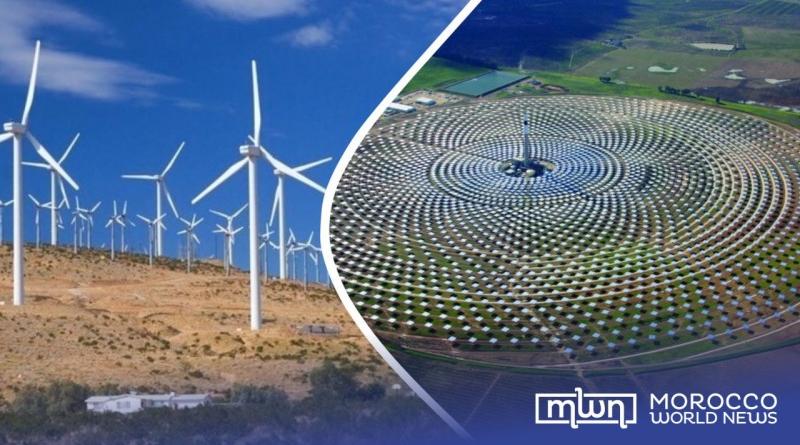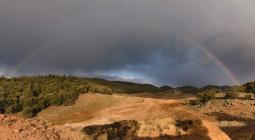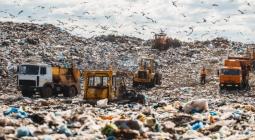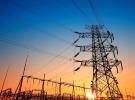Morocco Has Third Largest Solar and Wind Capacity in Arab World

Rabat - With a 1.9 GW of solar and wind capacity, Morocco has the third-largest renewables capacity among Arabic-speaking countries, said the latest Global Energy Monitor report.
Morocco’s current solar and wind capacity puts it behind Egypt, which tops the regional ranking with a 3.5GW installed capacity, and the UAE, which holds a capacity of 2.6 GW. Jordan and Saudi Arabia follow Morocco with 1.7 GW and 0.78 GW respectively.
As the Arab world has over 12GW utility-scale solar and wind power, the Global Energy Monitor found that Arabic-speaking countries are racing for renewables. Even leading oil producers such as Saudi Arabia, UAE, and Algeria are increasingly marking a shift from fossil fuels to embrace green energy.
A ‘Stunning Shift’
“At the epicenter of the oil economy, a renewables boom is taking shape,” said Ingrid Behrsin, Project Manager at Global Wind Power Tracker. “This transformation should send a strong signal to the rest of the world that even oil and gas-producing countries are embracing renewables.”
The Arab world’s “stunning” shift towards renewables is further supported by the region’s “tremendous potential for wind and solar development,” argued Kasandra O’Malia, Project Manager for the Global Solar Power Tracker.
Another illustration of the Arab governments’ willingness to support renewables development is the region’s plans to produce an additional 73 GW from new utility-scale solar and wind power projects. These projects will increase the region’s current overall capacity by more than five-fold to attain 91% of the Arab League’s 2030 renewable energy targets.
The prospective projects include 114 solar plants and 45 wind farms that are “markedly large,” said the report.
“The average size of prospective solar farm phases in the region is more than four times that of the rest of the world, and the average wind phase farm size is more than one and a half times that of the rest of the world,” the monitor added.
Oman, Morocco, and Algeria, the region’s top three countries, are set to produce 39.7 GW from prospective projects, which is the equivalent of more than four times the new gas-fired capacity from the three countries
Morocco is notably expected to produce an additional 14.4 GW from solar and wind energy over the next five years - six times the capacity of the country’s prospective gas projects. These large-scale extensions in renewable power make Morocco the Arab country with the second-largest forecasted solar and wind capacity additions.
Oman topped the list with 15.3 GW of prospective renewable power additions, ahead of Algeria with 10GW, Kuwait (9.6 GW), and Iraq (5.8GW).
As Morocco has long aspired to boost its solar and wind capacity by 14 GW and 1.3 GW between 2018 and 2027, the country will export roughly 12 GW of its prospective capacity.
According to the Global Energy Monitor report, projected green hydrogen projects in Morocco, as well as in Algeria and Saudi Arabia, are directed to international markets.
The hydrogen projects, such as Morocco’s 10 GW Total Eren Guelmim Oued-Noun, will store 5GW of solar power and 5 GW of wind power in the form of hydrogen and ammonia. The €9.4 billion investment will start operations in 2027.
Morocco faces challenges despite commendable efforts
With green hydrogen representing the future of a global transition to net-zero carbon emissions by 2050, Morocco is considered a leading regional and even global leader in the relatively new sub-sector.
The International and Renewable Energy Agency (IRENA) reported in June that Morocco has the potential to produce the world’s third-cheapest green hydrogen in 2050, thanks to the country’s installed and projected solar and on-shore wind power projects.
Morocco additionally has vital, untapped resources regarding tidal power and offshore wind power. Offshore wind power alone can meet Morocco’s energy demand 17 times.
The increase in Moroccan renewables capacity has helped alleviate expenses of green hydrogen production. However, the costly electrolysis technology and Morocco’s water scarcity could impede the country’s progress in this sector.
Recently launched desalination projects across Morocco can help address the water demand for the electrolysis process that splits water into hydrogen and oxygen.
However, such projects raise concerns about their impact on marine life. For instance, the desalination process releases large quantities of concentrated salt water back into the sea or ocean, which can harm the livelihood of marine life.
Although Morocco appears keen to advance its renewables sector in favor of primarily export markets, the North African country has not yet committed to any net-zero goal. Meanwhile, the current energy crisis highlighted the country’s reliance on fossil fuel energy imports. And recent investments in the Jorf Lasfar thermal plant also raise concerns regarding the country’s increased greenhouse gas emissions.
Still, reports have recently indicated that Africa’s contribution to global warming is minimal: The entire continent emits less than 3% of greenhouse gasses. Nevertheless, the continent is heavily impacted by droughts, floods, and rising temperatures, among other issues exacerbated by climate change.
- Souad Anouar \ https://www.moroccoworldnews.com/





